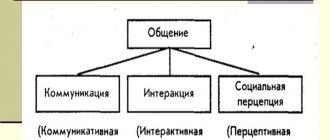§ 1. The concept of social maladjustment………………………………………………………4
§ 2. Types of social disadaptation. Causes and consequences……………………………………………………………………………………….5
§ 3. Characteristics of younger schoolchildren……………………………………………………….7
§ 4. Technology of working with primary schoolchildren to prevent social maladjustment…………………………………………………………………………………..9
Conclusion………………………………………………………………………………………10
Introduction
Recently, an increasingly pressing problem that unites the efforts of psychologists and teachers is the problem of social maladjustment as a phenomenon that impedes the full personal development of a student and complicates the educational process. Psychological services at schools need research on disadvantaged children to develop adequate methods of psychological and pedagogical correction of their maladjustment.
Moreover, social maladaptation is both a consequence and a cause of the destruction of the child-adult community, which leads to general academic failure, deviant behavior, deterioration of the psychophysiological state of children, etc. And school problems often lead to problems in the student’s family. That is why it is important to work to identify and eliminate the causes of social maladaptation already in elementary school.
4 pages, 1987 words
Social project “Take care of yourself”
...limited at best. Young people, as a rule, cannot obtain the necessary education and take the place in society that they expected. Thus... it is necessary to carry out enormous preventive, informational and educational work among teenagers. Description of the project 1. Name of the project: Social project “Take care of yourself” 2. Description of the project (mission, uniqueness, goals and objectives, ...
The purpose of our research was the search and practical implementation of methods of psychological prevention and correction of social maladjustment in younger schoolchildren.
§ 1. The concept of social maladjustment
- Pedagogical dictionary:
Social maladjustment (Social maladjustment) is a violation of a person’s normal relationship with society, with people and, as a result, difficulties in communicating and interacting with them.
- National Encyclopedia of Psychology:
Disadaptation is any violation of adaptation, the body’s adaptation to constantly changing conditions of the external or internal environment. A state of dynamic discrepancy between a living organism and the external environment, leading to disruption of physiological functioning, changes in behavior, and the development of pathological processes. A complete discrepancy between the organism and the external conditions of its existence is incompatible with life.
3. Disadaptation is a violation of the processes of human interaction with the environment, associated with weaning from some familiar living conditions and getting used to others.
§ 2. Types of social maladjustment. Causes and consequences
Types of social maladjustment:
- Intellectual – impaired thinking;
- Behavioral – non-compliance of behavior with norms;
- Communication – difficulties in communication;
- Somatic – deviations in health;
- Emotional – anxiety and worries about school problems.
Signs of maladjustment:
- tired, tired look of the child;
- reluctance to share impressions;
- reluctance to do homework;
- complaints about events at school;
- restless sleep;
- difficulty waking up in the morning, lethargy;
- constant complaints of poor health, etc.
The reasons for school maladjustment include:
- social stratification characteristic of modern Russia (often within the same class, children from such different families find it difficult to find a common language, poorly understand each other and do not know how to communicate);
— an increase in the number of children with mental retardation (MDD);
— an increase in the number of children with neurotic and serious somatic disorders.
Psychologists note that difficulties communicating with others (both adults and peers) are a very significant component of schoolchildren’s maladjustment.
Factors of maladjustment:
- low social status of the child; family relationship problems;
- low willingness to help a friend;
- poor relationships with peers;
- low cognitive abilities;
8 pages, 3963 words
Psychology of children with behavioral disorders
...can be combined with the latter. 7. A feature of behavioral disorder is that it is accompanied by various manifestations of social maladjustment. The state of maladaptation, in turn, can be independent ... physical development and puberty. 1. Concepts used to characterize children with behavioral disorders The obvious complexity of this concept is due primarily to its...
- inadequate self-esteem
From the first days of school, the child faces a number of tasks that require the mobilization of his intellectual and physical strength. Many aspects of the educational process present difficulties for children. It is difficult for them to sit through a lesson in the same position, it is difficult not to be distracted and follow the teacher’s thoughts, it is difficult to do all the time not what they want, but what is required of them, it is difficult to restrain and not express out loud their thoughts and emotions that appear in abundance. In addition, children do not immediately learn new rules of behavior with adults, do not immediately recognize the teacher’s position and establish a distance in relations with him and other adults at school.
To optimize the adaptation period of children, they need to be helped to get acquainted with each other, with teachers, with a new learning situation, with school and school rules.
Prevention and correction of school maladjustment
Children who have problems with school adaptation most often get tired quickly, find it difficult to concentrate, and their memory, attention and thinking may be reduced. All this leads to incomplete assimilation of educational material. It is easier for a child to complete independent work one on one with a teacher; those tasks that cause difficulties for the child can be completed at home. This is due to the fact that the home stop is more comfortable, it is easier for the child to concentrate and tune in to the right mood.
Note 1
There is currently no unified method for correcting school maladaptation. This problem must be solved comprehensively, taking into account pedagogical, psychological, medical and social aspects.
The main specialist who deals with this problem is a school psychologist. To begin with, the psychologist must learn more about the life of the child himself and identify factors that could contribute to the formation of school maladjustment. Next, the psychologist draws up a program that will help correct the child’s behavior while taking into account his individual abilities and inclinations.
§ 3. Characteristics of younger schoolchildren
Characteristic of the period 7–10 years is the transition to a new social status: a preschooler becomes a schoolchild. The main characteristic of this period is the combination in the child of the features of preschool childhood with new qualities characteristic of a schoolchild. During this period, active maturation of all anatomical and physiological structures and the maturation of the nervous system continues. A characteristic feature of this period is the formation of educational activities, which require from the child both great mental stress and activity, but not physical endurance. The quality of educational activities will depend on the extent to which the necessary prerequisites were formed in the preschool period. The following prerequisites are indicated: • General physical development State of vision, hearing, motor skills (especially the formation of small movements of the hands and fingers).
The state of the nervous system (the degree of its excitability and balance, strength and mobility; disorders of nervous activity, as well as the general state of health, primarily affect performance, which can negatively affect not only academic performance, but also the student’s attitude towards school, study and communication with peers). • Mastering a sufficient amount of knowledge and ideas about the world around us. Ideas about space. Ideas about time. Possession of basic counting skills. • Mastery of clear, coherent, grammatically and phonetically correct speech, the ability to carry out simple sound-letter analysis • Development of voluntary attention. Indirect memorization. The ability to listen to speech and teacher explanations. The ability to look and see, to concentrate on work. Remember what you need to understand something new. Ability to explain and draw appropriate conclusions. • Cognitive activity, desire to learn, interest in knowledge, curiosity • Communicative activity Willingness to work together with other children, cooperation, mutual assistance. The ability to obey the demands of adults. On the basis of these prerequisites, at primary school age the formation of new qualities necessary for learning begins.
12 pages, 5643 words
Formation of motivation for educational activities with mental retardation
... educational activities with mental retardation Systematic, targeted correctional and developmental work in a special school contributes to the formation of educational motivation in adolescents with mental retardation. ... voluntary regulation of activity suffers, others have reduced performance, and still others have more pronounced deficiencies in attention, memory, and thinking. How diverse...
During this period, very important psychological new formations appear: voluntary activity; the ability to plan your activities, evaluate your actions in terms of compliance with your goals; mastering self-control skills. Also, in the process of learning activities, the child’s ability to identify properties and concepts when solving specific tasks, to master learning activities, control and evaluation is formed. Skills of volitional regulation of activity and behavior are formed. During the first years of school life, changes also occur in the emotional-volitional sphere. An adequate self-esteem and level of aspirations corresponding to the level of its development are gradually formed. His emotions become more stable and strong-willed qualities are developed. Mental new formations find vivid expression in the development of cognitive processes. Perception becomes more focused and voluntary. The volume of attention, the ability to concentrate, distribute, and switch are expanding. Particular attention should be paid to the new formation in the development of memory - the transition to indirect memorization, mastery of memorization and reproduction techniques. Internal self-regulation and control begin to occupy an important place in mental processes. Also an important psychological new development of school age is the transition to sign-symbolic activity. The use of graphic diagrams and symbols when solving educational problems requires a fairly developed imagination and a qualitatively new, higher level of thinking. In the first grade, visual forms of thinking continue to be the leading ones; by the second or third year of schooling, the child begins to carry out analysis and synthesis based on ideas and mental comparison. The development of the verbal-logical form of thinking occurs.
Human maladjustment, its causes, prevention and overcoming
Disadaptation (from the Latin prefix de... or French des...) - means, first of all, disappearance, destruction, complete absence and is only much less often used as a decrease, reduction. A number of scientific publications use the term “disadaptation” (from the Latin dis - in the first meaning - disturbance, distortion, deformation, much less often - disappearance). Consequently, if we mean a violation, a distortion of adaptation, then we should talk specifically about disadaptation (through “and”), since complete loss, the disappearance of adaptation - this, when applied to a thinking being, should mean the cessation of meaningful existence in general, because while this the creature is alive and conscious, it is somehow adapted to the environment. At the same time, the Latin de is read both as “de” and “di”. Consequently, the essence of the word “maladjustment” is determined by what is included in it. This fact means that “disadaptation” and “disadaptation” in domestic literature and in practice are considered as synonyms.
Most often, disadaptation (disadaptation) is understood as a discrepancy between a person’s sociopsychological and psychophysiological status and the requirements of a life situation, which in turn does not allow him to adapt to the conditions of his environment. The phenomenon of maladaptation can occur in a separate (typical) or any environment. For example, at home a child feels quite comfortable and does not experience maladaptive phenomena, but in kindergarten, on the contrary, he feels uncomfortable.
Disadaptation, like adaptation, is considered as a process, manifestation and result.
Disadaptation as a process means a decrease in a person’s adaptive capabilities in the conditions of the living environment or in certain conditions (for example, in a kindergarten, class, group, etc.). It can manifest itself over time and lead to completely different consequences. In particular, maladaptation can have a sluggish current character and be practically invisible, becoming at a certain stage a serious problem that manifests itself sharply when a person in a certain situation turns out to be completely unadapted to it and cannot find himself. In this case, the consequences can be quite serious. For a child, long-term maladjustment is fraught with delays in development, the formation of negative attitudes, and anxiety.
Disadaptation as a manifestation is an external characteristic of any human ill-being, which is expressed in his atypical behavior, attitude and performance in given environmental conditions. Each child has its own forms of manifestation. It is often difficult to identify it externally. It is necessary to know the person well and his typical manifestations in various situations. The ability to timely understand the signs of maladjustment allows the teacher to quickly respond to the situation, preventing deep-seated negative consequences. We are not talking about creating greenhouse conditions for the pupil, but about preventing significant negative deformation consequences for him under the influence of maladjustment.
Disadaptation as a result is evidence of a comparative assessment of a qualitatively new state and manifestation that does not correspond to environmental conditions that are not typical for this person, based on his previous behavior and attitude (kindergarten teacher, student, etc.) to peers, studies and activities. In relation to a child, this is evidence that his behavior, relationships and performance (in relationships with children and adults, studies, games, etc.) do not correspond to the social norms that are characteristic of him (his peers) in these conditions environment.
In the specialized literature and in practice, the category maladapted is used in relation to a certain category of people: maladjusted children, maladjusted child, maladjusted group, as well as in relation to the environment that caused deformation phenomena: school maladjustment, family maladjustment, etc.
Maladjusted children. These are children who, for various reasons, cannot adapt to the conditions of their living environment (kindergarten group, class group, peer group, etc.) on an equal basis with their peers and other children, which negatively affects their self-expression, development, education, training, for example, a student who is performing poorly in class. At the same time, poor academic performance may not be the result of maladaptation, but a reflection of the student’s individual cognitive abilities in learning, reluctance to learn, etc.
A maladjusted person. This is a person who is different from other people due to problems of adaptation in the environment of life that affected him, his development, activity, and ability to solve problems that are natural for this situation.
Maladjusted child. A child who differs from his peers due to problems of adaptation in the environment that affected him, his development, socialization, and ability to solve problems that are natural for his peers.
A certain category of children quickly overcomes the state of maladjustment that they encounter in life. They do not encounter any particular difficulties in the process of natural adaptation to the conditions of the new environment. However, it should be emphasized that, despite the fact that children are quite dynamic in adapting to various conditions, they often experience great difficulties, which seriously affect maladapted children, their subsequent self-realization and self-improvement. Such children need help and support at the adaptation stage. The absence of these can have serious negative consequences for them.
School maladjustment. It is most often noted by teachers of primary schools, where children study who have difficulty adapting to school reality. It is typical for children aged 6-8 years, who do not understand the classroom situation, who do not have good relationships with classmates, and against this background there is practically no progress in the development of their cognitive activity or its pace is reduced. Such children need special attention and help from the teacher, an individual approach to their education and upbringing. An equally important role in stimulating the adaptive capabilities of these children belongs to the class team, its respectful attitude towards them and support.
If the teacher is able to build pedagogically appropriate relationships with maladjusted students, their parents and the class, school maladaptation can be largely overcome within 2-4 months after the start of the school year. In more severe cases, when children have persistent negative reactions to the learning situation in the classroom, it is necessary to obtain professional advice from specialists, including a psychologist, and in some cases, when the child has neurotic reactions in the form of irritable tearfulness, nervousness, aggressiveness in combination with sleep and appetite disorders, then see a neuropsychiatrist.
Various categories of children, under certain conditions, need targeted support and assistance to prevent the occurrence of maladaptation or overcome it in the process of their upbringing and education. Maladjusted children with pathological forms often need educational work with them in special educational institutions, oriented taking into account the factor that led the children to this condition. To work with them, special techniques and trained specialists are needed.
The main causes of human maladjustment are groups of factors. These include: personal (internal), environmental (external), or both.
Personal (internal) factors of human maladjustment are associated with insufficient realization of his social needs as an individual. These include:
- long-term illness;
- the child’s limited ability to communicate with his environment, people and the lack of adequate (taking into account individual characteristics) communication with him from his environment;
- long-term isolation of a person, regardless of his age (forced or forced) from the environment of everyday life;
- switching to another type of activity (long vacation, temporary performance of other official duties), etc.
Environmental (external) factors of a person’s maladaptation are associated with the fact that they are not familiar to him and create discomfort, which to one degree or another restrains personal manifestation.
These include:
- unhealthy family environment that suppresses the child’s personality. Such a situation may occur in “at-risk” families; families in which an authoritarian parenting style predominates, child abuse;
- absence or insufficient attention to communication with the child from parents and peers;
- suppression of personality due to the novelty of the situation (child’s arrival at kindergarten, school; change of group, class);
- suppression of the individual by a group (maladaptive group) - rejection of the child by the team, microgroup, oppression, violence against him, etc. This is especially typical for adolescents. Manifestation of cruelty (violence, boycott) on their part towards peers is a frequent occurrence;
- a negative manifestation of “market education”, when success is measured exclusively by material wealth. Unable to provide sufficient income, a person finds himself in a complex depressive state;
- negative influence of the media in “market education”. Formation of interests that do not correspond to age, promotion of the ideals of social well-being and the ease of achieving them. Real life leads to significant disappointment, complexion, and maladjustment. Cheap mystery novels, horror films and action films form in an immature person the idea of death as something vague and idealized;
- the maladaptive influence of an individual, in whose presence the child experiences great tension and discomfort. Such a personality is called maladaptive (a maladaptive child is a group) - this is a person (group) who, under certain conditions in relation to the environment (group) or an individual, acts as a factor of maladaptation (affecting self-manifestation) and, thus, restrains his activity , the ability to realize oneself most fully. Examples: a girl in relation to a guy who is not indifferent to her; a gynergic child in relation to the class; difficult to educate, actively playing a provoking role in relation to the teacher (especially a young one), etc.;
- overload associated with “concern” for the development of the child, which is not suitable for his age and individual capabilities, etc. This fact occurs when an unprepared child is sent to a school or gymnasium class that does not correspond to his individual capabilities; overload the child without taking into account his physical and mental capabilities (for example, with sports, school, club activities).
Maladjustment of children and adolescents leads to various consequences. Most often these consequences are negative, including:
- personal deformations;
- insufficient physical development;
- impaired mental function;
- possible brain dysfunction;
- typical nervous disorders (depression, lethargy or excitability, aggressiveness);
- loneliness - a person finds himself alone with his problems. It can be associated with external alienation of a person or with self-alienation;
- problems in relationships with peers, other people, etc. Such problems can lead to suppression of the main instinct of self-preservation. Unable to adapt to the current conditions, a person may take extreme measures - suicide.
A positive manifestation of maladaptation is possible due to a qualitative change in the living environment of a child or adolescent with deviant behavior.
Often, disadapted children include those who, on the contrary, are themselves a person who seriously influences the adaptation of another person (group of persons). In this case, it is more correct to talk about a maladaptive person or group.
“Street children” are also often classified as maladjusted. We cannot agree with this assessment. These children are better adapted than adults. Even in difficult life situations, they are in no hurry to take advantage of the help offered to them. To work with them, specialists are trained who can convince them and bring them to a shelter or other specialized institution. If such a child is taken from the street and placed in a specialized institution, then at first he may turn out to be maladapted. After a certain time, it is difficult to predict who will be maladjusted - he or the environment in which he finds himself.
High adaptability to the environment of new children with deviant behavior often leads to serious problems of a negative nature in relation to the majority of children. Practice shows that there are facts when the appearance of such a child requires the teacher or educator to make certain protective efforts in relation to the entire group (class). Individuals may well have a negative impact on the entire group and contribute to its maladjustment in learning and discipline.
All of these factors pose a direct threat, primarily to the intellectual development of the child. Difficulty in education, social and pedagogical neglect pose a danger of maladaptation of the child himself in the field of education, training and education, as well as of individuals and groups. Practice convincingly proves that just as the child himself becomes a victim of maladjustment in the new environment, under certain conditions he acts as a factor in the maladjustment of others, including the teacher.
Considering the predominantly negative impact of maladjustment on the personality development of a child and adolescent, it is necessary to carry out preventive work to prevent it. The main ways to help prevent and overcome the consequences of maladjustment in children and adolescents include:
- creating optimal environmental conditions for the child;
- avoiding overload in the learning process due to the discrepancy between the level of learning difficulties and the individual capabilities of the child and the organization of the educational process;
- support and assistance to children in adapting to new conditions;
- encouraging the child to self-activate and express himself in the environment of life, stimulating their adaptation, etc.;
- creation of an accessible special service for socio-psychological and pedagogical assistance to various categories of the population who find themselves in difficult life situations: helplines, offices for socio-psychological and pedagogical assistance, crisis hospitals;
- training parents, teachers and educators in methods of working to prevent maladaptation and overcome its consequences;
- training of specialists for specialized services of socio-psychological and pedagogical assistance to various categories of people in difficult life situations.
Maladjusted children need efforts to provide or help in overcoming it. Such activities are aimed at overcoming the consequences of maladjustment. The content and nature of social and pedagogical activity is determined by the consequences to which maladaptation has led.
§ 4. Technology of working with younger schoolchildren to prevent social maladjustment
Various causes of school maladaptation cause the same manifestations: learning difficulties and behavioral disturbances. Psychological work can go in two directions - with cause and effect (i.e. with symptoms).
School psychologists focus their activities on eliminating symptoms.
Since learning difficulties are often associated with underdevelopment of the cognitive sphere, it is the cognitive processes that need to be developed: attention, memory, thinking. Most preventive and correctional programs for the development and/or formation of attention are based on a method developed within the framework of the concept of the gradual formation of mental actions (P.Ya. Galperin, S.L. Kabylnitskaya).
17 pages, 8485 words
A child’s psychological readiness for school depending on the level...
… memory development……… Conclusion…………………………………………………………..………..…… References………………………… …………………………………… Introduction Psychological readiness for schooling is understood as the necessary and sufficient level of mental development of a child to master school... schooling is the prevention of school maladaptation. ... to school and educational activities in ... to take a new social position ...
The process of developing logical memory is specially organized, since it is believed that children of primary school age resort to repetition in order to remember. Correctional programs dedicated to memory development can be found in specialized literature - in the works of L.M. Zhitnikov, E.L. Yakovleva, in a series of books on the development of memory by I.Yu. Matyugin and others.
The works of M.N. Akimova and V.T. Kozlova, S.M. Bondarenko, E.V. Zaika, N.F. Talyzina and others are devoted to the directed work on teaching children the basic techniques of mental activity. Special games and exercises for the development of motor skills in children children are widely represented in pedagogical and psychological literature - in the works of V.P. Matytsin, in the book “Psychohygiene
School maladjustment: concept, factors, causes, types
Definition 1
School maladaptation is understood as a violation of the student’s acquisition of knowledge and skills and the inability to master the active skills of collective learning activities in an educational institution.
There are several factors that contribute to the development of school maladjustment:
- social factor
- psychological factor
- medical factor
There are also several reasons for the appearance of school maladjustment. One reason may be brain dysfunction. Another reason may be neuroses and neurosis-like conditions.
School maladjustment has several types of manifestation. The first type manifests itself in the fact that the child does not keep up with the school curriculum. The child's cognitive component is not developed.
Are you an expert in this subject area? We invite you to become the author of the Directory Working Conditions
The second type of school maladaptation manifests itself in the fact that the child experiences a violation of his personal attitude towards certain subjects and teachers. The child has not developed the emotional, evaluative and personal component.
The third type of school maladaptation manifests itself in violations of discipline during the learning process. In this case, the behavioral component is not developed.







